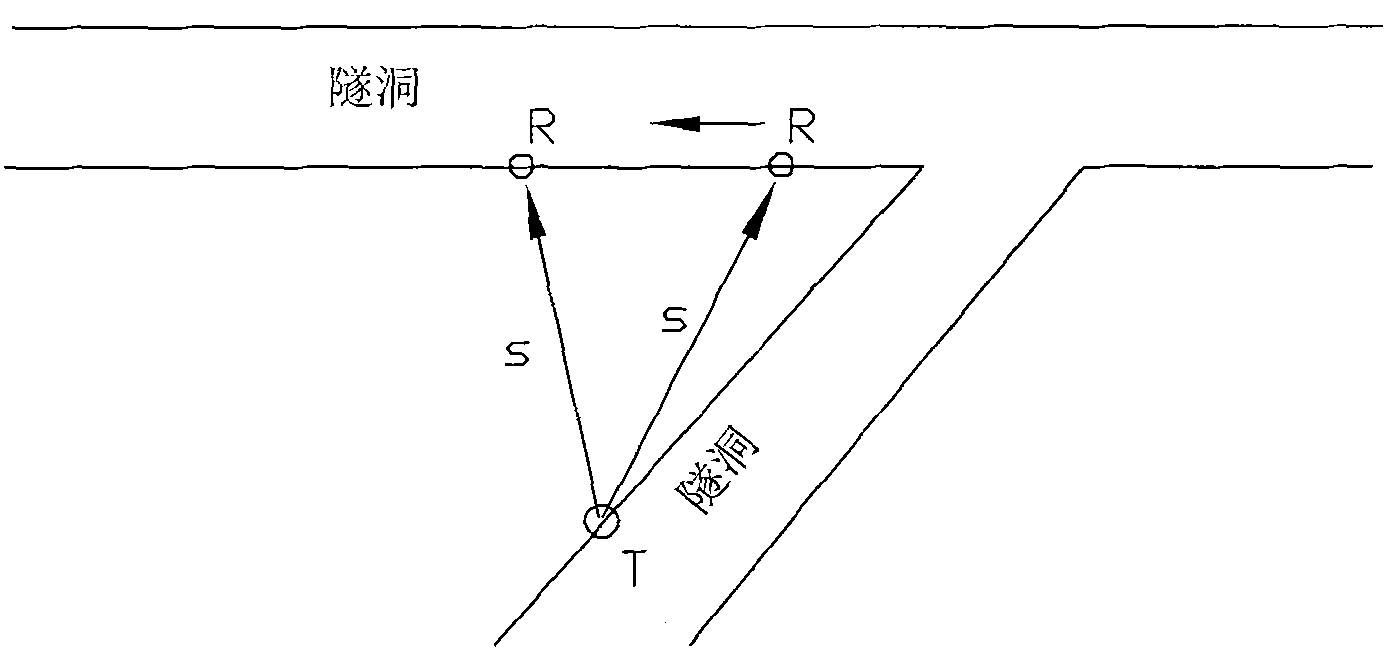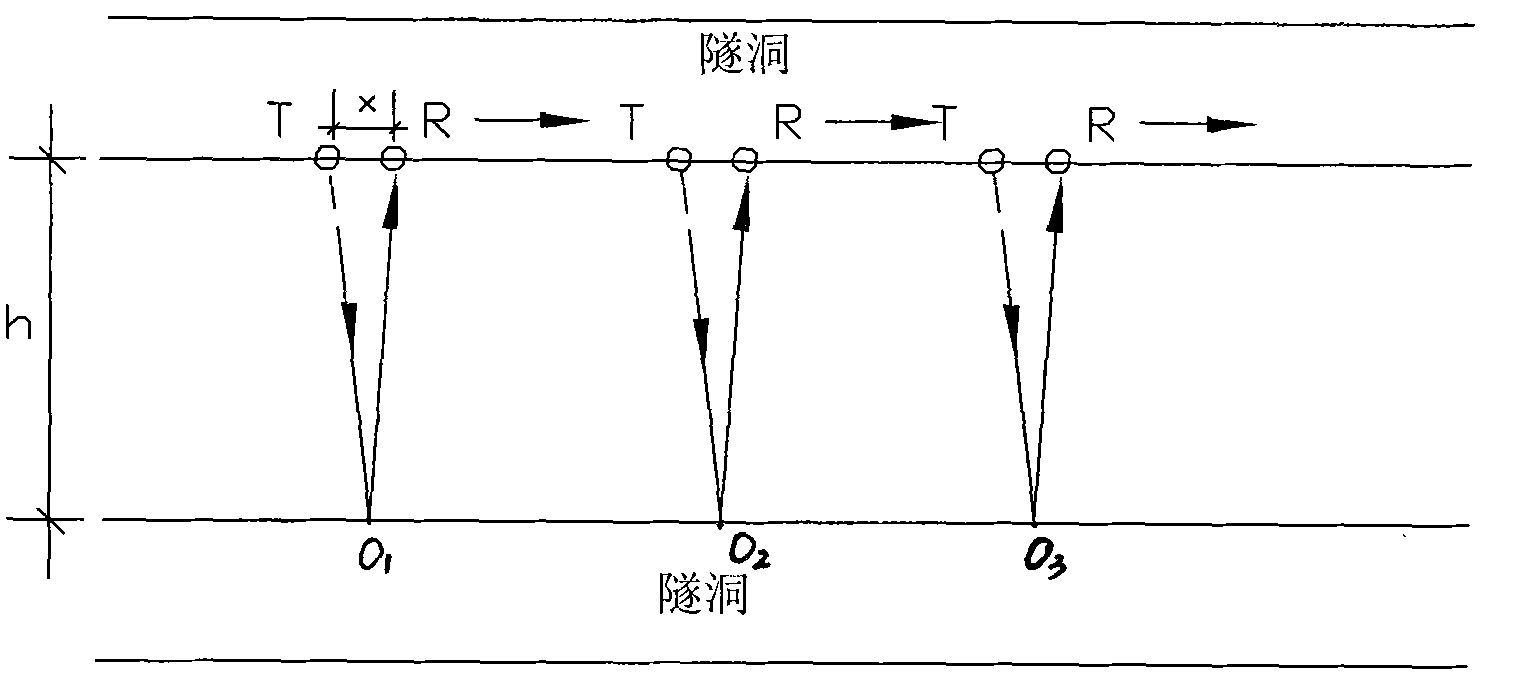In situ measurement method for relative dielectric constant of stratum
A technology of relative permittivity and formation, applied in electromagnetic field characteristics, measurement devices, measurement of electrical variables, etc., can solve the problems of inability to represent formation medium and influence, and achieve the effect of improving accuracy and detection accuracy
- Summary
- Abstract
- Description
- Claims
- Application Information
AI Technical Summary
Problems solved by technology
Method used
Image
Examples
Embodiment 1
[0029] Such as figure 1 As shown, the present embodiment has two intersecting tunnels, and the relative permittivity of the formation is obtained by using the direct wave method to measure the propagation velocity of the formation electromagnetic wave on the spot. The steps are as follows:
[0030] 1) Place the transmitting antenna T and receiving antenna R of the geological radar in two intersecting tunnels, and fix the transmitting antenna, move the receiving antenna to change the straight-line distance s between the two antennas, and measure the electromagnetic waves at different distances from the transmitting antenna The travel time t to the receiving antenna is used to calculate the electromagnetic wave propagation velocity v in the formation:
[0031] v = s t
[0032] In the formula, s is the distance from the transmitting antenna to the receiving antenna, t is the travel time of the electromagnetic wave, and v i...
Embodiment 2
[0037] Such as figure 2 As shown, the present embodiment has two substantially parallel tunnels, and the relative permittivity of the formation is obtained by using the wide-angle reflection method to measure the propagation velocity of the formation electromagnetic wave on the spot. The steps are as follows:
[0038] 1) Place the transmitting antenna T and receiving antenna R of the geological radar on the side wall of one of the tunnels, move the transmitting antenna and receiving antenna in opposite directions, adjust the distance x between the two antennas from near to far, and measure the reflection of known reflection interfaces with different distances Electromagnetic wave travel time t. Such as figure 2 As shown, the electromagnetic wave reaches the receiving antenna R after being reflected by the common reflection point O from the transmitting antenna T, Therefore, the formation electromagnetic wave velocity v can be obtained:
[0039] v = ...
Embodiment 3
[0045] Such as image 3 As shown, the present embodiment has two substantially parallel tunnels, and the relative permittivity of the formation is obtained by using the narrow-angle reflection method to measure the propagation velocity of the electromagnetic wave in the formation on the spot. The steps are as follows:
[0046] 1) Place the transmitting antenna T and receiving antenna R of the geological radar on the side wall of one of the tunnels, and keep a relatively fixed distance x, move the transmitting antenna and receiving antenna synchronously, and measure the reflected electromagnetic wave travel time t of the known reflection interface. Such as image 3 As shown, the electromagnetic wave passes from the transmitting antenna T through the reflection point (O 1 , O 2 or O 3 ) reaches the receiving antenna R after reflection, Then get the formation electromagnetic wave velocity v:
[0047] v = 2 × ...
PUM
 Login to View More
Login to View More Abstract
Description
Claims
Application Information
 Login to View More
Login to View More - R&D
- Intellectual Property
- Life Sciences
- Materials
- Tech Scout
- Unparalleled Data Quality
- Higher Quality Content
- 60% Fewer Hallucinations
Browse by: Latest US Patents, China's latest patents, Technical Efficacy Thesaurus, Application Domain, Technology Topic, Popular Technical Reports.
© 2025 PatSnap. All rights reserved.Legal|Privacy policy|Modern Slavery Act Transparency Statement|Sitemap|About US| Contact US: help@patsnap.com



